12 Tips You Need To Brew The Perfect Cup Of Tea From Shop Owners
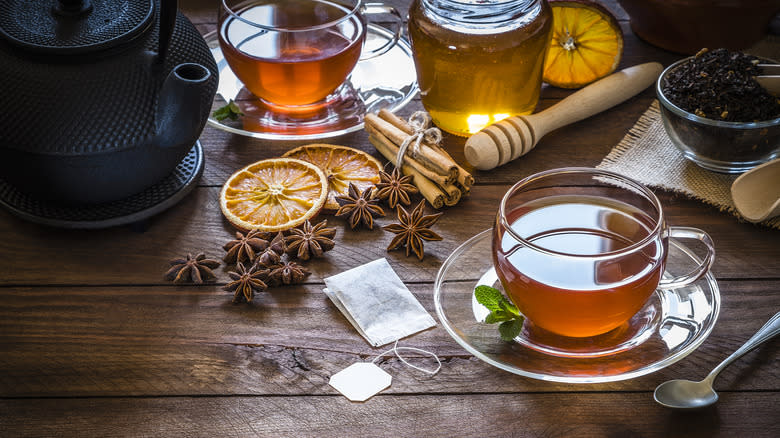
Is your cup of tea just, well, not your cup of tea? Although preparing tea can sound simple, there are a few brewing tips and tricks you need to know in order to steep the perfect cup. Tea can be delicate and a little finicky at times, so a typical brewing process follows a few important, basic steps to ensure each cup you brew will be at its very best.
As a former barista, I've worked with plenty of different teas. Although I've brewed many cups before, I'm no tea sommelier, so I wanted to ask for advice from someone who knows all the ins and outs of tea brewing. I spoke with Jeannie Liu, founder and owner of Seattle tea shop Miro Tea, to see what advice she's been brewing up. Having been a Seattle staple for over 15 years, Miro Tea never brews a bad cup, so you can trust Liu's advice when it comes to tea-making. Here's everything you need to know to brew the best cup of tea you'll ever drink.
Read more: 26 Coffee Hacks You Need To Know For A Better Cup
Opt For Loose Leaf Teas Over Tea Bags
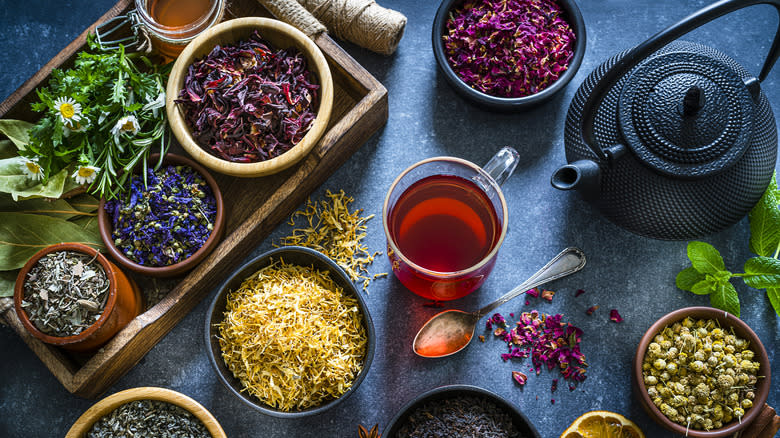
A common dilemma of the store-bought brewer is whether to choose loose leaf teas or tea bags. For one, bags are generally a little more accessible and often cheaper than loose leaf. There are some benefits to using tea bags, something Liu can agree with: "If someone is just starting out their tea journey, and perhaps they are intimidated by the procedures of tea brewing, choosing [high-quality] pre-portioned tea bags may be a good starting point to develop the habit of drinking tea," she says.
But overall, loose leaf is the real way to go. "More often than not, it's often difficult to find high-grade and exceptional tasting teas in tea bags," says Liu. "From my experience with people, if they aren't enjoying the product, then they're less likely to continue drinking it. So for those reasons, I really recommend going straight to loose leaf tea so they can imprint how good tea is prepared and how it is supposed to taste from the beginning." If you're someone who has felt that tea just hasn't cut it for you in the past or you're ready to jump straight to experiencing the best flavor, you should dive right into a jar of loose leaf tea. Focus on starting with just one blend you truly love, and it'll be worth the extra cost upfront.
The Difference Between Black, Green, And White Teas
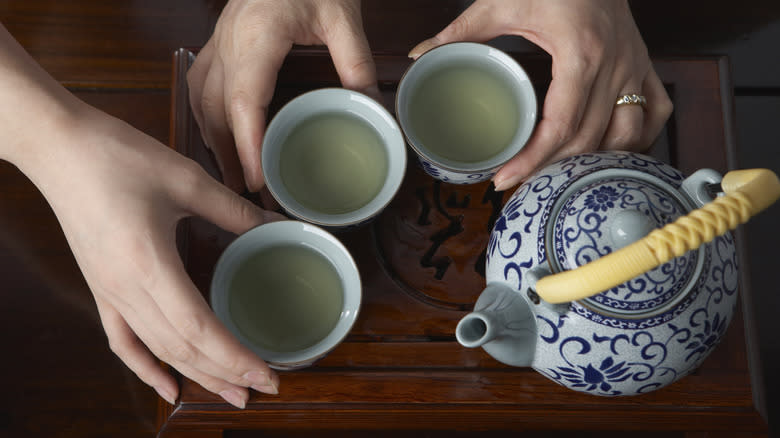
In order to pick the perfect tea blend to brew, you'll need to understand the basics of black, green, and white teas. The main factors you'll want to keep in mind are flavor and caffeine level. In terms of caffeine, black tea usually has the most caffeine out of all teas, while green tea is often mildly caffeinated. White tea usually contains very little caffeine. This can vary depending on the type of tea you purchase.
White tea tends to be the gentlest of the teas, ideal for someone who enjoys sweeter and more delicate flavors. On the other end of the scale, black teas tend to be very strong and flavorful, sometimes ranging towards slightly more bitter or powerful. Green teas are right in the middle, and they're probably also the first thing you think of when you think of a cup of tea.
If you're still trying to figure out your favorite kind of tea, you can pick your ideal tea blend by starting with a type of tea that appeals to you or just by selecting a flavor you find interesting. Understanding the differences between white, green, and black tea can help you learn about tea flavor profiles (and keep an eye on your caffeine intake).
Use Filtered Water When Possible
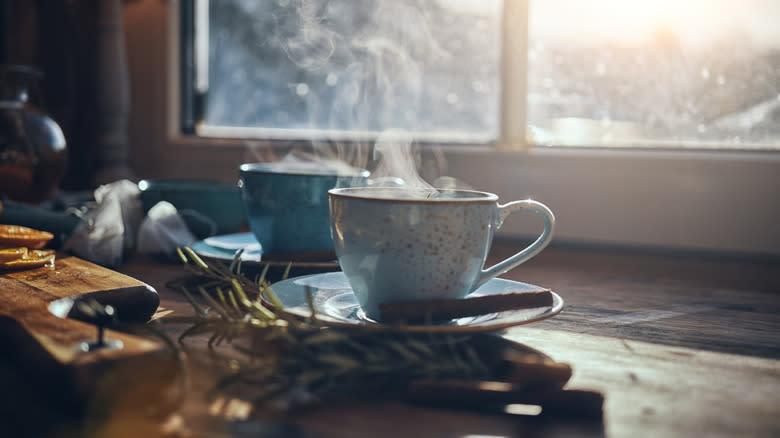
This can be a slightly debated subject when it comes to brewing tea because not everyone will need to filter their water for the perfect cup. Ideally, though, you'd use bottled or filtered water for each cup of tea you brew. There are so many different factors that can affect the way your cup of tea tastes; this means that, depending on how the tap water in your area is, your cup of tea might taste completely different based on your location.
Especially if you're in an area that has tap water that isn't completely neutral-tasting, you should opt to filter your water (maybe even twice) or purchase bottled water to use for your tea instead. It sounds like a lot of extra work, I know -- but it's worth it for the perfect cup of tea. Tea isn't powerful in the same way coffee is, for example -- it can't change the entire flavor profile of a cup of non-neutral water. If your tap water tastes even slightly off, you can guarantee that your tea will, too.
Try swapping out the tap water in your teapot for bottled or filtered water. You might notice a significant difference in the quality of your tea. If you're following all the right steps when it comes to brewing but still aren't enjoying your cup of tea, it could be the water itself that's to blame.
Don't Steep Your Tea For Too Long
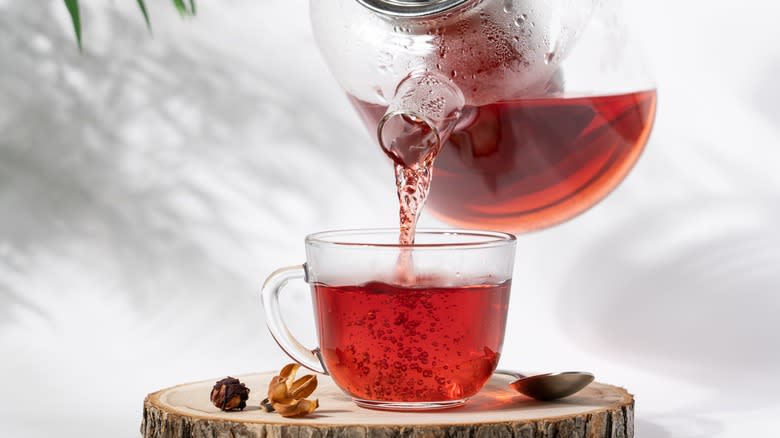
There's plenty of advice out there on tea-steeping that says if you want your tea stronger, brew it longer. That's true -- you may notice that many tea blends come with instructions that have varied brewing times. Generally, these are the recommended lengths of time for a very light brew to a much stronger cup.
When you go over these times in hopes of making your drink even stronger, however, is where things can start to go sour -- literally. Over-brewing your tea is the fastest way to make it bitter, which will not only destroy the original delicate flavor of the tea but will also mix badly with any additions you choose to make to your cup. If you've been desperately covering up the taste of your tea with spoonfuls of honey or wondering why people choose to drink tea when it's naturally bitter, well, that's not the true flavor of the tea you're tasting.
"Tea gets bitter because of over-extraction of its tannins, catechins, and caffeine," says Liu. For the uninitiated, tannin is a compound that is fairly bitter; catechin is an antioxidant compound; and caffeine (let's face it, you're probably familiar) is a stimulant. When released, these compounds can all taste rather bitter. That's four separate compounds and biomolecules affecting the flavor of your brew!
Heat Your Water To The Right Temperature
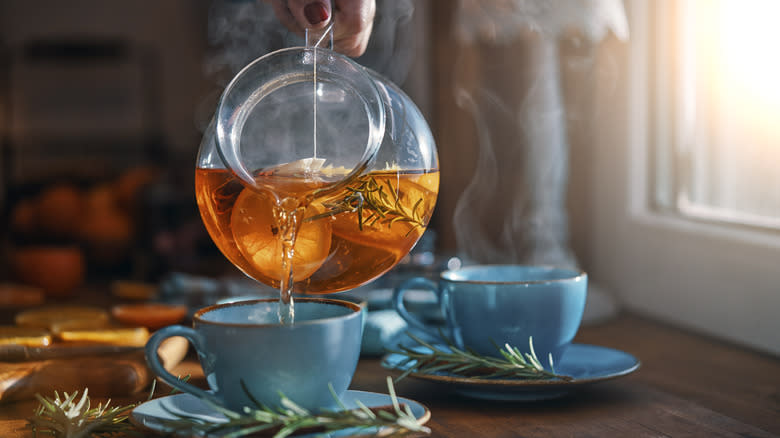
Have you been ... microwaving the water you're using for tea? Besides being a cardinal sin of tea brewing, doing this will genuinely affect the flavor of your cup. Teapots aren't just for the aesthetics -- they're so you can perfect your brewing temperature and get the most flavor out of your tea.
If your water is too cold, your tea leaves won't be prompted to release flavor into your cup of water. Usually, this is the biggest issue if you are on team microwave; just because your water is steaming doesn't mean it's hot enough for tea. But overheating your tea isn't the way to go, either. Remember those tannins, catechins, and caffeine hiding in your cup of tea? Liu says that hot water temperatures can also cause these compounds to over-extract, making your tea bitter even when you've followed the recommended brew times.
The temperature at which you'll want to brew your tea can range nearly 100 degrees, depending on what type of tea you're working with. To ensure you're fully equipped to brew your tea properly, you'll need to read the instructions on the blend you're working with. For best results, I always recommend opting for a tea kettle with a built-in thermometer. You can also use a handheld thermometer to get the exact temperature of your water.
Choose The Right Size Tea Cup
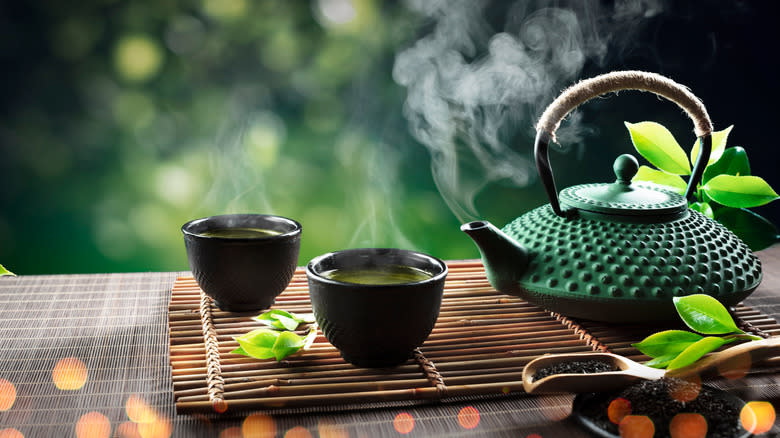
At the risk of sounding like a tea snob, you'll want to find a nice cup before you pour. The main reason for this is so you can enjoy your tea without it being too hot or cooling off too quickly. This is true whether you're brewing your tea in a teapot first or steeping your tea in your cup.
Generally speaking, tea is best enjoyed in a teacup (shocker, I know). There are a few widely accepted reasons for this: The size of the cup allows your tea to cool to the perfect drinking temperature. Small teacups allow you to sip slowly and savor the flavor without risking your tea getting cold, and generally, where there are teacups there is also a teapot keeping the majority of the tea warm so you can pour small amounts of tea out at a time.
Depending on the kind of tea you're drinking, the cup you'll want to choose may vary slightly. Chinese tea ceremonies typically use very small teacups. Teatime in England will mostly see you using a standard teacup. Japanese teacups have no handles and can vary in volume based on the type of tea being brewed. Turkish tea is drunk in small glasses so you can admire the tea's pretty color. If you really want to go all out, match the kind of teacup you use to where your tea blend comes from.
Source The Best Brews From Your Local Stores
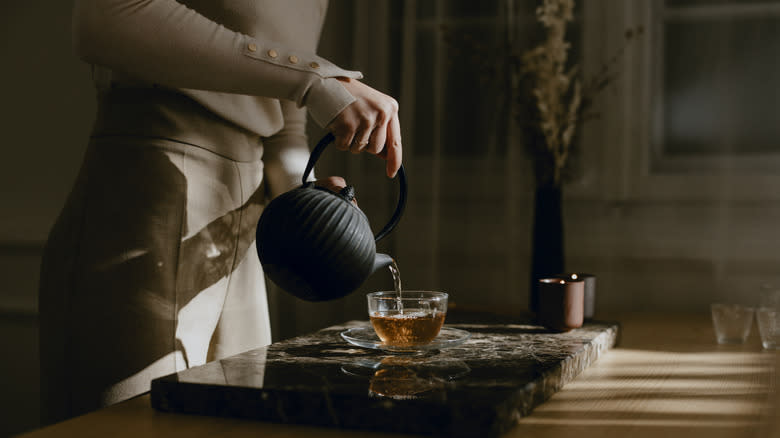
So, you're finally ready to start brewing. Well, almost -- unless you've managed to inherit a well-stocked cabinet full of quality teas, you'll still need to get your hands on a good tea blend. As with pretty much any drink, you can do everything right when it comes to brewing and still wind up with a bland cup of tea -- if you're using a low-quality tea, that is.
Liu's best tip for sourcing quality teas is to head to your local tea shop. After all, what better way to go about finding your favorite blend than by talking to your own local tea expert? "They should be your guide in your personal tea journey and education," says Liu. "Because that's ultimately what it becomes once you decide to choose tea as your beverage of choice. There is so much to explore and learn about, you will need trusted, knowledgeable people at hand to help offer suggestions, answer questions, and help you develop your palate and tea preferences."
It's true -- despite learning the basics of brewing, you may not have a good sense of your flavor preferences when it comes to quality teas. Speaking to an expert about the best type of tea for you is key. They'll be able to take into account your flavor preferences, desired caffeine level, brewing expertise, and so much more to help you find your perfect match.
White Tea Recommendation: Silver Needle
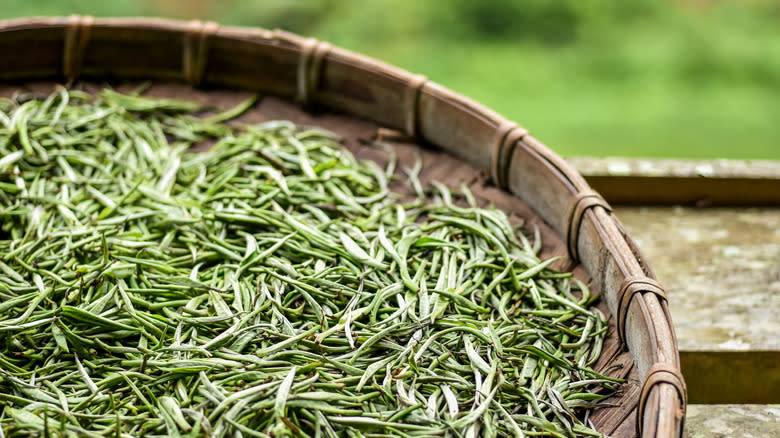
"White teas are a great option for people looking for a lighter tea," says Liu. "Silver Needles, similar to our Silver Needle Feng Qing, are full leaf buds that brew gently and release its flavor slowly, yielding a sweet nutty tea with wildflower honey notes." If you're just starting out brewing, want to completely avoid caffeine, or prefer lighter flavor profiles, Silver Needle is the way to go. The tin of loose leaf Silver Needle in my cabinet and I can very much attest to Liu's recommendation. It's a delicate flavor that's delicious on its own when properly brewed.
As for black and green teas, as a barista, I'll be honest: The tea drink I saw ordered most frequently was a London Fog (Earl Grey brewed in steamed milk with vanilla syrup). But most tea specialists would agree that this isn't a "real" tea; it's a tea latte. If you want to taste the true flavors of a specialty coffee blend, you're probably not going to add it to a milkshake. So, even if you're hoping to stick to a more classic green or black tea flavor, opting for a high-quality loose leaf blend will always give you the best results (and will make the tea delicious on its own).
Black Tea Recommendation: Darjeeling
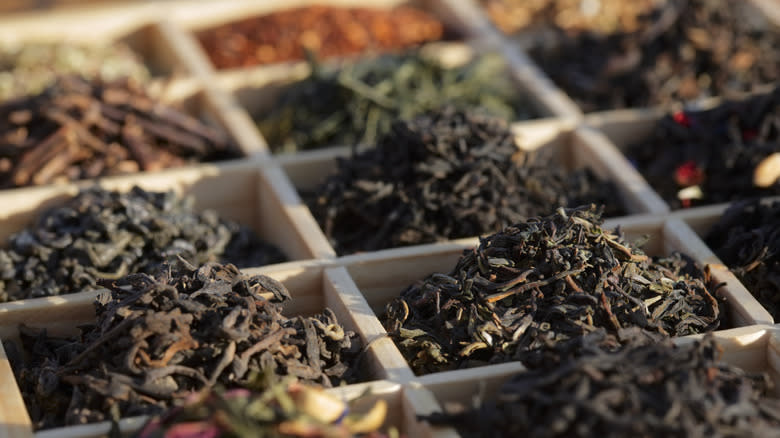
I blame my years as a barista for the reason why I have an affinity for Earl Grey tea. But when you're considering the most highly-regarded black tea, I would say Darjeeling wins out over most other teas (although any definitive tea blend statement is always primed to start a hot debate).
For an introduction to black teas, it's pleasant because it's not quite as strong-tasting as other black teas while still providing a full-tasting flavor. It's lightly sweet and a little bit fruity, making it a more complex option for luxury black teas. A good-quality Darjeeling will usually be a little bit pricey, but certainly worth it. As with any high-quality tea, opting for loose leaf will be your best bet when it comes to Darjeeling. This way, you can control the exact amount you're putting in your cup (we're rationing here, people) and can dry the leaves out again for a second use whenever possible.
Should You Be Adding Condiments To Your Tea?
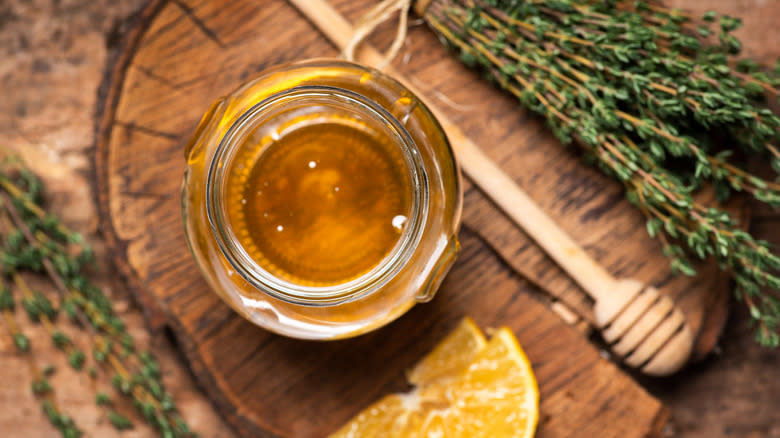
The real question many tea lovers still struggle with is: Can you add condiments to your tea? If you've been a long-time fan of milk with tea, sugar, lemon, or honey, maybe you're not ready to give that up just yet. But will tea connoisseurs scoff at you for adding tea condiments?
If you're working with low-quality teas, I always say: Go for it. At the end of the day, low-quality bagged tea is probably going to taste better with a few extra flavors -- no offense. Also, if you're wondering whether or not it's okay to be a tea lover with an affinity for, say, tea lattes, that's an entirely different drink. Just be aware that it changes the drink fundamentally a little bit, and tea sommeliers probably wouldn't agree that you're drinking strictly tea.
The rest of the answer depends on the tea culture and type of tea you're drinking. In England, for example, you might find that people frequently add sugar and milk to their tea -- it's not a crime to add condiments to your tea there. In India, it's probably more common to drink tea with milk than it is to drink it without. But if you're in China, you certainly wouldn't be adding anything to your tea -- it's meant to be drunk on its own. So, depending on where you are (or where your tea came from) the answer might change.
Drink High-Quality Teas On Their Own
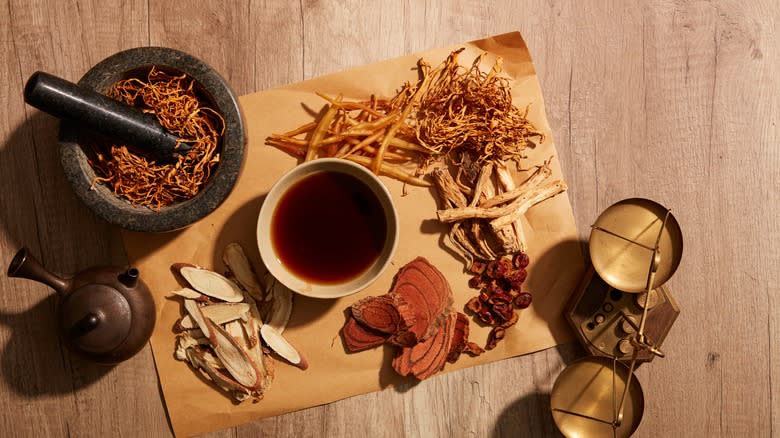
There's still one more thing to note about adding condiments to high-quality versus low-quality tea. If your tea is expensive, from a trusted local shop, or from a renowned brand, you should probably try it on its own first. Chances are, its creators didn't plan on you mixing a bunch of other flavors into the tea blend. Some teas can be extremely delicate, while others may have certain flavor notes that are covered up by condiments. Drinking tea plain is like getting to know a family recipe before putting your own spin on it; you want to be familiar with the flavor, what you like, and what (if anything) you want to add to it before diving right in with a spoonful of honey, milk, and lemon.
I always recommend trying tea on its own before opting for any outside additions; it's the best way to experience the tea's true flavor and learn more about your own palette preferences. Plus, how are you ever going to figure out whether you brewed your tea properly if you're too busy covering up its natural flavor?
Use Different Brewing Methods For New Flavors
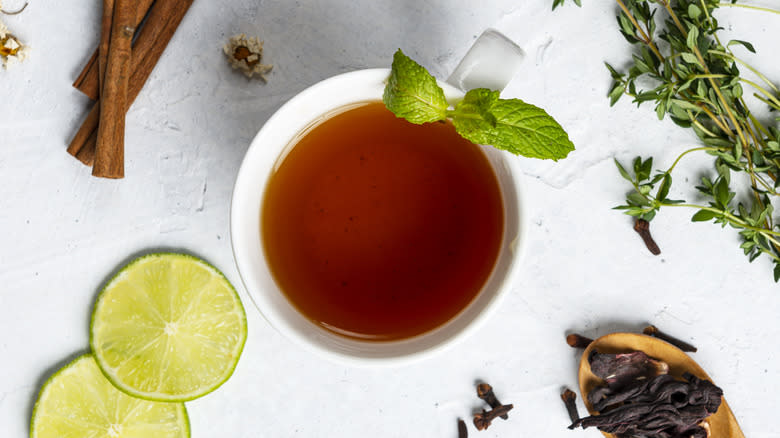
There are plenty of popular brewing methods floating around out there that I wanted to get Liu's advice on. One unique brewing method that's been trending lately is the ice-brewing method, something Liu enjoys herself. "Brewing Japanese green teas in melting ice is always amazing, particularly for high-grade shaded greens like Gyokuros," she says. "But you can definitely try it with a nice kukicha or sencha. Simply add ice on top of the leaves in a container or pitcher and let the ice melt completely. Ideally, it should take at least 30 minutes for everything to melt and to brew the tea thoroughly." Often, ice-brewed teas will have a different flavor profile; they may be a little more mild, and the ice can also help remove bitterness.
That's not the only method Liu highlighted for me: "Another method is the decoction method," she added. "It's basically creating a concentration of tea by boiling it. This works particularly well for large-leaf white teas." Instead of carefully timing the steeping of your tea, you would boil hardier leaves (or other parts of the plant) in water. This is why Liu points out that large-leaf teas are ideal for this type of brewing method.
Read the original article on Tasting Table

